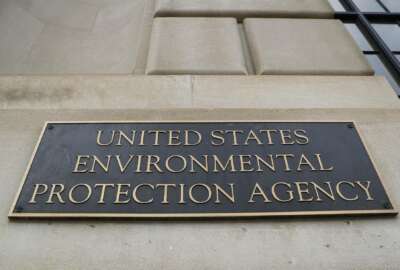
EPA moves ahead on plans to shutter Michigan facility for emergency response personnel
The Environmental Protection Agency is moving ahead on its decision to shutter an agency-owned facility in Michigan that will impact nearly 20 emergency response...
Subscribe to Federal Drive’s daily audio interviews on Apple Podcasts or PodcastOne.
The Environmental Protection Agency is moving ahead on its decision to shutter an agency-owned facility in Michigan that will impact nearly 20 emergency response employees.
The EPA earlier this month reached an agreement with the American Federation of Government Employees that would shutter the Large Lakes Research Station, a facility located in Grosse Ile, Michigan, that’s owned by the agency’s Office of Research and Development (ORD).
Once it closes the Large Lakes Research Station, the EPA plans to relocate about 20 emergency response employees to prefabricated office buildings in Ann Arbor, Michigan, about an hour away from their old offices. The EPA will set up the prefab offices on the site of the agency’s vehicle emission testing facility.
According to a copy of the memo obtained by Federal News Radio, agency employees would start working out of the new Ann Arbor facility at the beginning of June.
The EPA signed its memorandum of agreement with AFGE on Feb. 1, about a week before the agency announced it would end ORD operations in Las Vegas, Nevada, and relocate more than 50 employees across the country.
Keith Fusinski, an EPA toxicologist and vice president for AFGE Council 238 and Local 704, told Federal News Radio that the move to Ann Arbor probably falls short of the distance that would require EPA to offer relocation expenses.
“What they’re doing is they’re playing it safe. They’re keeping us within the 50-mile radius, which is required for relocation assistance,” Fusinski said Friday.
The move, he added, affects about 17 emergency response employees tasked with cleaning up environmental accidents, as well as two Criminal Investigation Division employees. Several contractors serving administrative functions, Fusinski added, would also be laid off following the move.
Why EPA decided to relocate
While the EPA’s plan to relocate has been in the works for several years now, Fusinski described several back-and-forth decisions that led to this point.
About two years ago, EPA management asked workers at the Large Lakes Research Station to develop a potential office relocation document outlining what the employees would need to operate in a new facility, he said.
Fusinski said agency management gave the green light to begin looking at new potential offices, but soon reversed course.
“We got a message that said, ‘Don’t worry about it, our office is a strategic asset. We have at least four more years left before they even talk about closing it.’ And then a couple months later, we started getting messages that we’re going to be closing,” he said.
The EPA officially notified employees about the relocation on Aug. 31, 2017.
Fusinski said the EPA has cited federal office consolidation as the reason for the move to Ann Arbor, but unlike its leased ORD buildings in Las Vegas, the agency owns the Large Lakes Research Station and does not have any immediate plans for the facility once they close it.
From a mission standpoint, Fusinski said relocating to Ann Arbor doesn’t make much sense, noting that the old office is more strategically located for emergency response personnel.
“Where we’re located now, we’re basically 20 minutes from Detroit, 30 minutes from Toledo. We’re right on that corridor where most of these responses happen. Now we’re moving an hour away. So now if we get a call that needs a response, then I’ve got to drive all the way to Ann Arbor — traffic in and out of Ann Arbor can get pretty hairy, we can get up to two-hour delays sometimes — go get the vehicle, get back out of Ann Arbor, and then go respond to the emergency. So it’s really going to delay the emergency response times, which puts people at risk,” he said.
New Ann Arbor facilities
Once relocated, emergency response employees will work out of modular, prefabricated buildings built by the company PortaFab. The office modules will be located on the grounds of the EPA’s National Vehicle and Fuel Emissions Laboratory, which has more than 400 employees.
In their current office building in Grosse Ile, Fusinski said employees each have their own private offices with about 144 square feet of space. In the new PortaFab office space, he estimated each employee will have about 48 space feet of space.
“It’s a step down in space, it’s a step down in privacy. The equipment that the emergency responders have here — all the suits they have to wear if they need them, all the monitoring equipment that we have — we’re really being crammed into a very small area,” he said.
Fusinski said emergency response employees would also lose the warehouse space they currently have at the Large Lakes Research Station, but would be given about 300 square feet of yard space at the new Ann Arbor facility.
“They’re basically going to put a gate up in front of the emissions lab, a little fenced-off area, and that’s going to become our warehouse,” he said.
In their current office space in Grosse Ile, Fusinksi said emergency response personnel have individual lockers, but said he was unsure if that space would be provided in the Ann Arbor office.
“Our needs and our requests to actually be a functional emergency response unit are not being met,” he said.
According to the agency’s memo, the EPA is taking precautions to keep the neighboring facility’s vehicle exhaust from entering the PortaFab buildings’ air intake.
“As vehicle testing is performed in the new office location and/or the surrounding complex, the agency will conduct a ventilation survey to ensure vehicle exhaust does not affect the new offices and common areas and to ensure that air quality meets or exceeds the standards set forth in the EPA and [the National Institute for Occupational Safety and Health] ‘Building Air Quality Guidance,'” the memo said.
Closing down valuable federal real estate
While the EPA cited an Obama administration memo to consolidate federal real property as the reason for closing its leased Las Vegas facilities, Fusinksi said he’s unsure where the cost savings are in shutting down the Grosse Ile building, since it’s owned by the agency and is in good working order.
“The federal government’s already set up here, we own the buildings outright. What are we going to do with the buildings? We don’t know,” he said.
Before housing EPA’s emergency response personnel, the Large Lakes Research Station has served a number of purposes for federal agencies. It’s been an Air National Guard base, and as its name would suggest, it served as a Great Lakes research lab before ORD moved its research personnel to Duluth, Minnesota.
The building also currently accommodates the U.S Fish and Wildlife Service, but the agency plans to move out once it finishes the construction of its new welcome center at the Detroit River International Wildlife Refuge.
“It would be much much easier for EPA to go to other federal agencies, which I know are lacking on space. We’re right next to an airport, it would be great for Border Patrol. There’s a Border Patrol building they just built down in Gibraltar a couple of miles away that’s already packed full of people and they don’t have any more space,” Fusinski said.
When reached for comment, EPA spokeswoman Liz Bowman said ORD relocated its two Grosse Ile-based workers to Ann Arbor last May.
“EPA has been working with Region 5 and other organizations with staff still in Grosse Ile on landing places including potentially Ann Arbor,” Bowman said Friday.
Last August, Rep. Debbie Dingell (D-Mich.), whose district includes Ann Arbor, introduced the Recognizing the Environmental Gains in Overcoming Negligence (REGION) Act, which would prevent the closure of EPA regional offices or program offices.
In a statement to Federal News Radio, Dingell said passing the REGION Act remains a top priority, in order to prevent the closure of other EPA offices.
“The EPA research station in Grosse Ile plays a critical role in ensuring safe, clean water and responding to toxic spills or emergencies that threaten the health of our families and the environment,” she said.
Copyright © 2025 Federal News Network. All rights reserved. This website is not intended for users located within the European Economic Area.
Jory Heckman is a reporter at Federal News Network covering U.S. Postal Service, IRS, big data and technology issues.
Follow @jheckmanWFED





